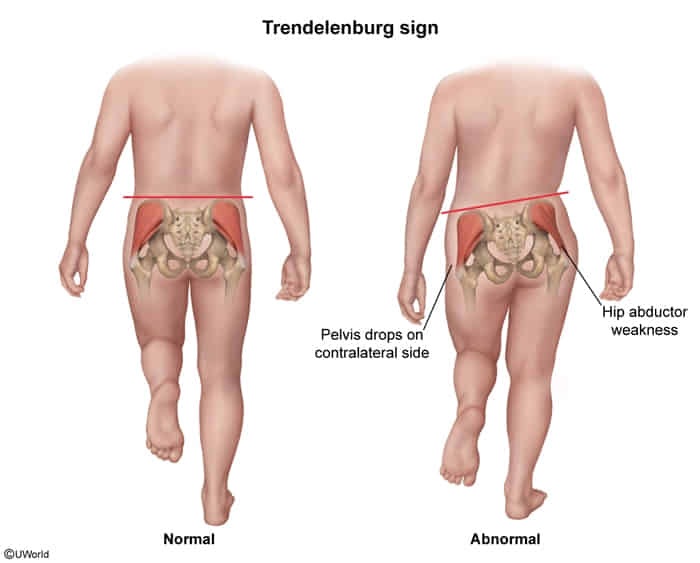Purpose
- Test for neurological insufficiency of the gluteus medius and gluteus minimus muscles, which are innervated by the superior gluteal nerve
Examination
- The patient is asked to stand on one leg.
Interpretation

- Negative Trendelenburg sign (physiological): The pelvis remains level as it is stabilized by the gluteus medius and minimus.
- Positive Trendelenburg sign (pathological): Because of insufficiency of the gluteus medius and minimus on the side of the standing leg, the pelvis drops towards the contralateral, unimpaired side.
- Duchenne sign: The torso tilts toward the contralateral side, compensating the pelvic drop on the unimpaired side.
- Duchenne limp: The Duchenne sign, which frequently occurs bilaterally, results in a compensatory to‑and‑from movement of the torso during walking.